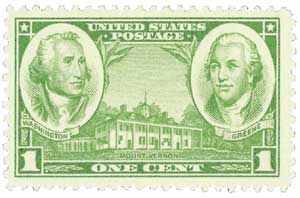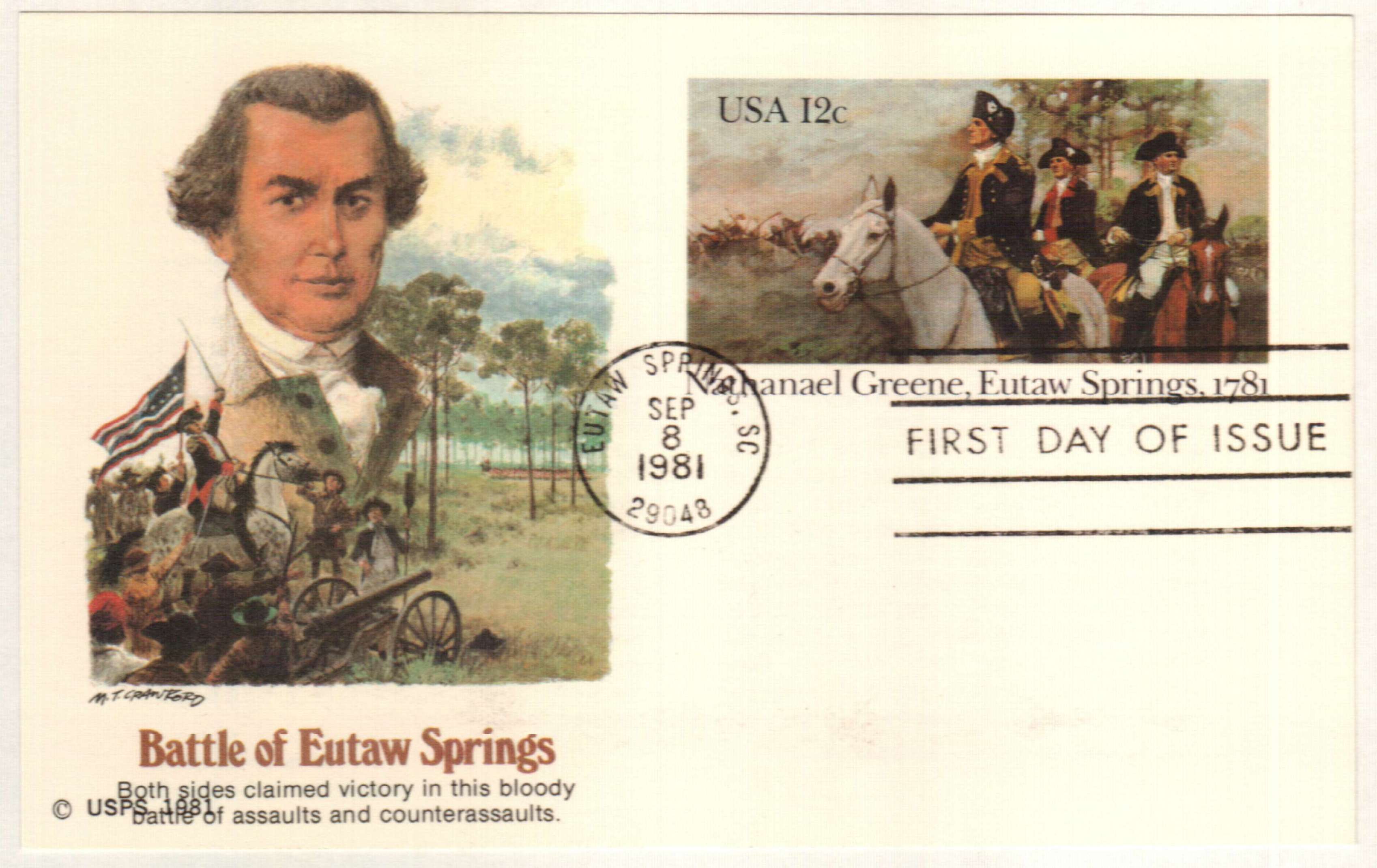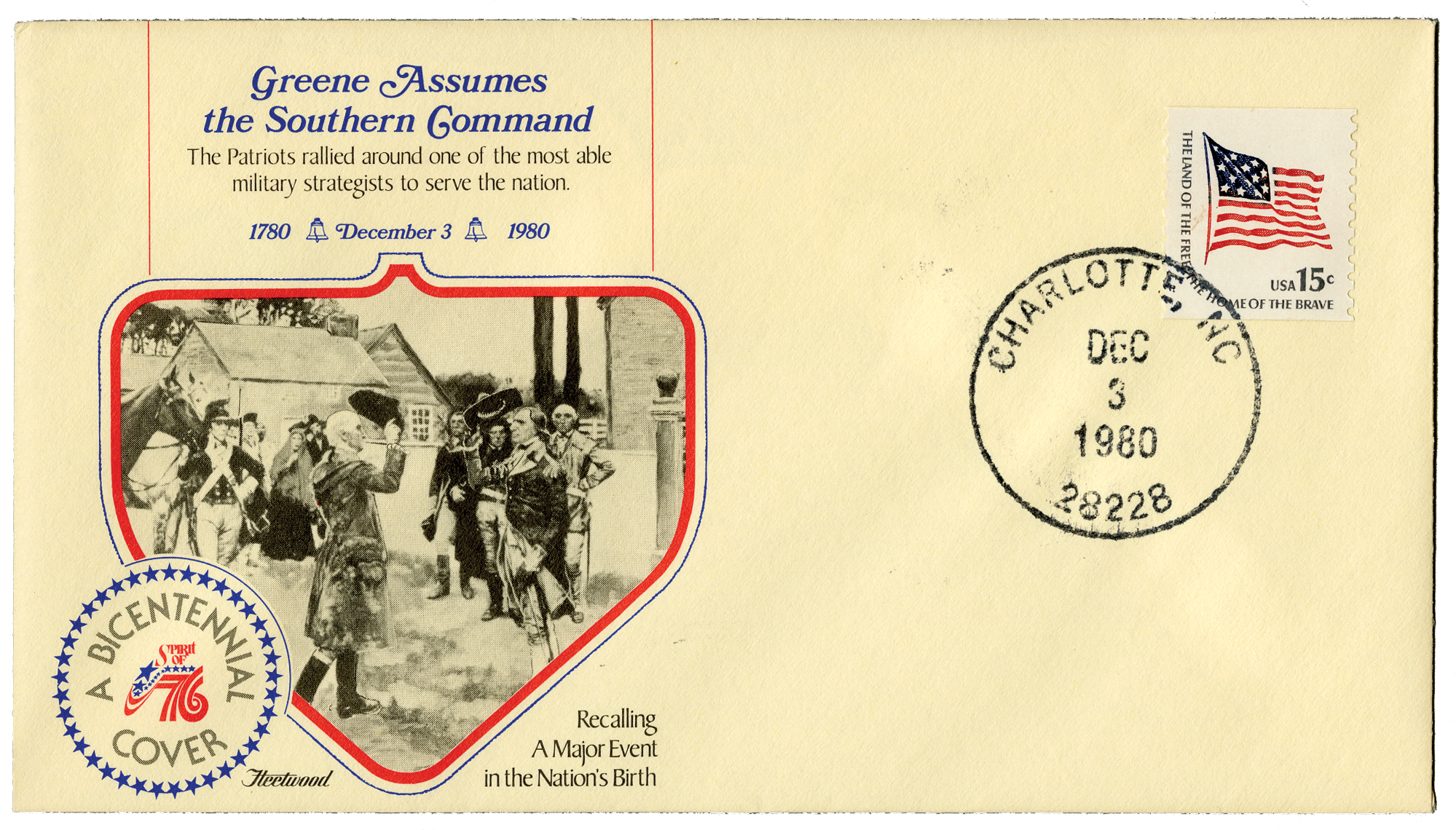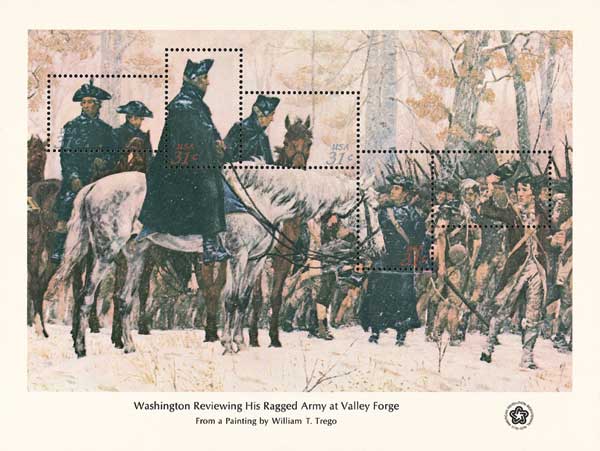
# 93126 - 1980 Greene Commands South
Â
Birth Of Nathanael Greene

Revolutionary War commander Nathanael Greene was born on August 7 (July 27 by the Old Style calendar), 1742, in Potowomut (Warwick), Rhode Island.
Raised in a Quaker family, Greene focused his studies on mathematics and law. He was later expelled from the Quaker church, which opposes war.

In 1770 Greene took over his family’s foundry in Coventry, Rhode Island. While there, he was the first person to push for the creation of a public school. From 1770 to 72, and in 1775, Greene served with the Rhode Island legislature. In 1774, when trouble with Great Britain became imminent, he organized the Kentish Guards, a military group. A stiff knee prevented Greene from serving as an officer, but he did serve in the ranks.

After the Battle of Lexington, the Kentish Guards set out to aid the Boston patriots, but were recalled by Rhode Island’s loyalist governor. However, Greene and three others continued on to Boston. Greene took part in the siege of Boston. By 1776, he had achieved the rank of major general, commanding the army of occupation in Boston.

Greene fought at the historic battles of Trenton, Brandywine, and Germantown, and served with General George Washington during the winter at Valley Forge. In 1778, he became the quartermaster general, but resigned in 1780 due to unfair political investigations of the quartermaster department.

In December 1780, Greene replaced the command of General Horatio Alger Gates after the defeat at Camden, South Carolina. Greene’s leadership marked a turning point in the war in the South. The Continental Army inflicted heavy casualties against the British at the Battle of Guilford Court House in North Carolina in March 1781. By the end of the year, Greene’s forces had pushed the British back to Charleston and Savannah.
Â
After the war, North Carolina, South Carolina, and Georgia all awarded Greene large tracts of land and money for his service, some of which he donated to his Southern army. Greene served as president of the Society of the Cincinnati and was twice offered the post of Secretary of War. He refused the post and retired to his estate in Georgia, where he died on June 19, 1786.
Â
Â
Birth Of Nathanael Greene

Revolutionary War commander Nathanael Greene was born on August 7 (July 27 by the Old Style calendar), 1742, in Potowomut (Warwick), Rhode Island.
Raised in a Quaker family, Greene focused his studies on mathematics and law. He was later expelled from the Quaker church, which opposes war.

In 1770 Greene took over his family’s foundry in Coventry, Rhode Island. While there, he was the first person to push for the creation of a public school. From 1770 to 72, and in 1775, Greene served with the Rhode Island legislature. In 1774, when trouble with Great Britain became imminent, he organized the Kentish Guards, a military group. A stiff knee prevented Greene from serving as an officer, but he did serve in the ranks.

After the Battle of Lexington, the Kentish Guards set out to aid the Boston patriots, but were recalled by Rhode Island’s loyalist governor. However, Greene and three others continued on to Boston. Greene took part in the siege of Boston. By 1776, he had achieved the rank of major general, commanding the army of occupation in Boston.

Greene fought at the historic battles of Trenton, Brandywine, and Germantown, and served with General George Washington during the winter at Valley Forge. In 1778, he became the quartermaster general, but resigned in 1780 due to unfair political investigations of the quartermaster department.

In December 1780, Greene replaced the command of General Horatio Alger Gates after the defeat at Camden, South Carolina. Greene’s leadership marked a turning point in the war in the South. The Continental Army inflicted heavy casualties against the British at the Battle of Guilford Court House in North Carolina in March 1781. By the end of the year, Greene’s forces had pushed the British back to Charleston and Savannah.
Â
After the war, North Carolina, South Carolina, and Georgia all awarded Greene large tracts of land and money for his service, some of which he donated to his Southern army. Greene served as president of the Society of the Cincinnati and was twice offered the post of Secretary of War. He refused the post and retired to his estate in Georgia, where he died on June 19, 1786.
Â







